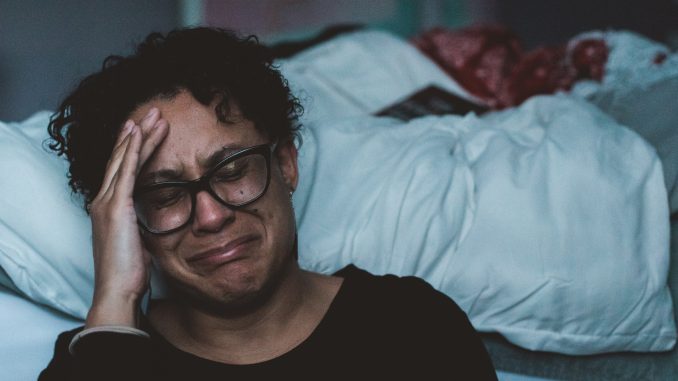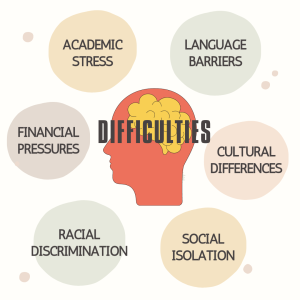
Story & Angle
As the pandemic subsides, a large number of international students return to Australia, which means they must rebuild their lives alone in an unfamiliar environment. According to one study, these students face many difficulties, such as academic stress, language barriers, cultural differences, social isolation…which makes them vulnerable to mental illness. A survey reveals that around 77% of international students have been affected by feelings of depression, sadness and anxiety. Likewise, another report shows that international students are a high-risk group for mental illnesses, with increasing incidence and severity, while 51.4% of health professionals believe that resources to provide support are inadequate.

In this context, the safety and well-being of these international students are undoubtedly at great danger. The numerous tragic suicides demonstrate the seriousness and prevalence of mental illnesses among international students, but this issue is underrepresented in media, therefore I plan to produce a feature story on it to raise awareness. I will explore a range of questions, including what factors undermine international students’ mental health, whether there are adequate and effective support resources, the difficulties that impede recovery, and what improvements schools and governments need to make.
Purpose
Earlier, Audrey Jamieson, the coroner in charge of the investigation into an international student’s suicide, called for more to be done to support the welfare of international students, or tragedies would continue to occur. But solving the issue presupposes first making it visible to the public, so this feature will aim to do that, giving voice to a large but neglected group of international students.
Victorian Coroner Audrey Jamieson recommends further improvements to wellbeing supports for international students. Read here: https://t.co/9ZYFlR94wc
— Coroners Court of Victoria (@CoronersVic) January 14, 2021
Publication & Target audience
With this goal in mind, the intended publication is SBS Online News, as it is a high-impact media organization representing diverse and marginalised groups, with the value of “We…ensure everyone is heard” and a mission to expose social issues and take collective action to change Australia, which match the purpose and the community featured in this story.
This feature aims to appeal to a broad audience. According to SBS’s audience analysis, its audience is those who care about marginalised groups and want to promote a diverse and inclusive Australian society, so the feature will meet their interests.
Information sources
I will gather a wide range of information from various parties, including:
- Interviews:
- International students struggling with mental disorders;
- A counselor from the school’s psychology clinic to obtain expert opinions;
- Cole Scott-Curwood, the USU President to seek the perspective based on student interests.
- Government bodies:
- School:
- Society:
- And other credible news stories and research reports.
Multimedia & Interactivity
- Hyperlinks to sources;
- Photographs and videos of story subjects (by permission);
- Pictures and videos relating to mental health;
- Infographics of relevant statistics;
- An NHS Depression and Anxiety Self-assessment Quiz to facilitate self-assessment by readers;
- Mental health support resources and helplines;
- A comment section for public debate by readers;
- Display a personal email address for readers to communicate.





The issue that you’re going to address in your story is really important and I think, as an international student yourself, you can find a unique angle and make this story sound personal. Choosing SBS for pitching your story is also a very worthwhile idea since one of their main purposes is to inform migrant communities including international students.
As for presenting your pitch, you did a good job too. I like the headline, the main photo, subheadings and your diagram. There’s an issue with hyperlinks that I find distractive: you use the phrases “one study”, “a survey”, “another report”, “the numerous of tragic suicides” and to understand the legitimacy of those studies your reader needs to click on the link and wait for reports to open. It’s common practice to mention the name of the research, its authors or organisation that published it and then hyperlink those names to give the reader an option to find out more. Also, not all the hyperlinks are opening in a new window (a survey – needs to be fixed).
The tweet you embedded is a bit old, don’t you think? It’s from January, 2021 but you use the word “Earlier” presenting it. If there’s no recent posts and you really want to use this particular tweet you could say something like “Even in the middle of pandemics when there were not so many international students in Australia, Audrey Jamieson, the coroner in charge of the investigation into an international student’s suicide, called…”
I love the amount of thought you put into creating the list of interviewees, including the students who struggle with mental health and the experts. I just hope you’ll be able to find a really great talent (an international student) who is ready to share their story and who’s got that great story of facing serious circumstances and overcoming them. You can then create the whole story around that talent because nothing attracts a reader more than personal stories. You just need to be very careful when interviewing this person, keeping their psychological difficulties in mind, respecting their feelings, and possibly using a pseudonym if they don’t want to reveal their identity. It’s also important to include a trigger warning for readers, as well as the contacts of available support in Australia.
I like that you have considered the possibilities for interactivity with the audience.
Good luck with the story!